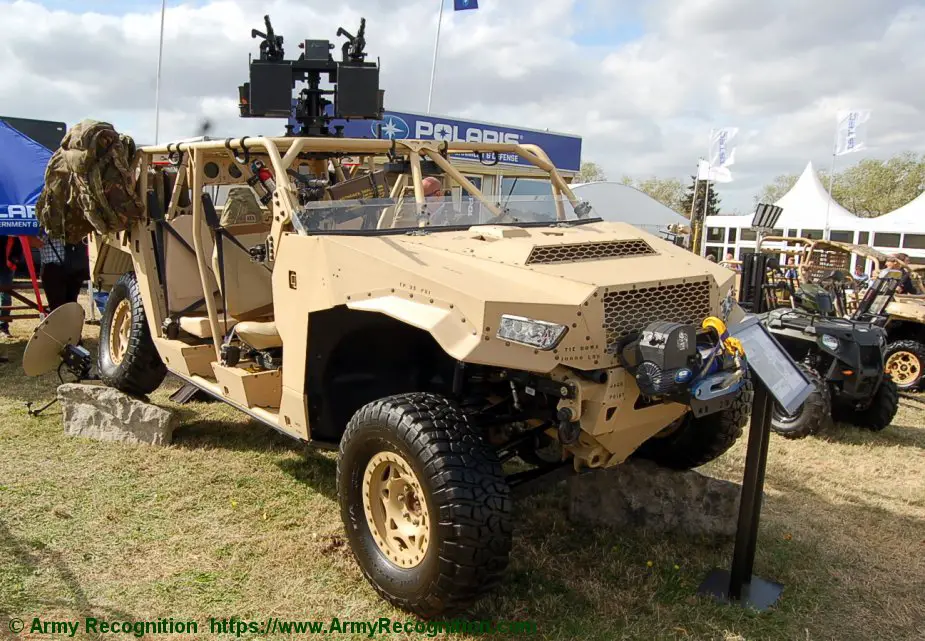Breaking news
Infantry Squad Vehicle, a super light ATV to ferry US troops on the battlefield.
The U.S. Army is looking for a new vehicle, unarmored, to quickly transport troops across the battlefield, as reported by Foxtrot Alpha. Qualified applicants must carry nine fully-armed infantry soldiers, work after being pushed out of an airplane, and enjoy a road speed of 55 mph. The Army recently released a market survey for what it’s calling the Infantry Squad Vehicle, or ISV. The ISV is meant to be an ultra-light vehicle capable of hauling troops across the battlefield. Unlike other vehicles, the ISV will merely be a troop carrier not to use in fighting tasks.

Polaris has been a supplier of the US special forces for a while but the Infantry Squad Vehicle now wanted by the US Army doesn't exist on the market so far, hence the impossibility to illustrate it, howver it would look somehow like an extended version of this one displayed at DVD 2018 (Picture source: Army Recognition)
A somehow basic level of troop carrier is where the new Infantry Squad Vehicle (ISV) must take its place. The U.S. special ops forces pioneered the use of all-terrain recreational vehicles in Afghanistan. ATVs offered rapid movement across cross-country terrain but, being civilian vehicles, offered no protection from hostile fire. The Army expanded their use by purchasing Polaris Defense MRZR all-terrain vehicles, each of which could carry four soldiers and mounted a heavy machine gun, for trials with the 82nd Airborne Division.
Now, the Army wants a bigger vehicle capable of carrying a nine-person airborne or light infantry squad. The Army defines the ISV as a “lightweight, high mobility platform” transportable both by a UH-60 Blackhawk or CH-47 Chinook helicopter and a low-velocity airdrop—basically being parachuted from a C-130 or C-17 transport. The maximum vehicle curb weight must be no more than 4,800 pounds (2.18 tons), plus nine fully equipped soldiers, which the Army reckons weights another 3,200 pounds (1,45 tons). The total gross weight should not overtake 4 tons.
Mobility is the keyword for the desired ISV. So far, if paratroopers, light infantry or air assault troops want to quickly secure their objective, they need to land close by, and become a target for guns and surface-to-air missiles. Soldiers equipped with ISVs would complicate the enemy’s defense: a unit of paratroopers could embark on a C-17 transport in the United States, fly thousands of miles and drop at multiple locations miles from their objective, converging on it from all directions. A Blackhawk medium transport helicopter could carry the ISV as a slung load underneath with the nine-soldier squad.
In both cases soldiers can land miles from the objective, drive most of the way there, and dismount to attack, ideally by surprise. The problem with the ISV is that there is zero protection for the soldiers riding in it. Hence, it should not be used for any fighting task, just ferrying. The Army’s market survey reckons the service could eventually buy up to 2,065 ISVs, with low rate production from 2020 to 2024, and then 261 vehicles a year after that.


























